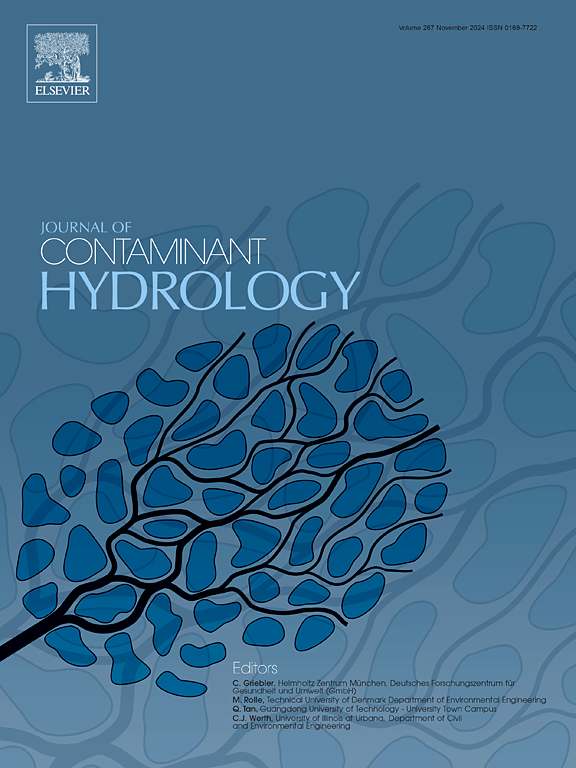生物农药真的安全吗?对淡水鱼肠道菌群和肠道健康的影响。
IF 4.4
3区 环境科学与生态学
Q2 ENVIRONMENTAL SCIENCES
引用次数: 0
摘要
越来越多地使用生物农药作为化学农药的环保替代品,正在重塑农业和水产养殖业的害虫防治。然而,它们对非目标水生物种,特别是淡水鱼的潜在影响仍未得到充分研究。本文综述了不同生物农药对淡水鱼肠道菌群和肠道健康的影响,包括微生物制剂、生化化合物和植物性保护剂等。肠道微生物群在消化、营养吸收、免疫和鱼类整体健康中起着至关重要的作用。生物农药暴露可能破坏微生物平衡,导致多样性减少、群落组成变化、炎症和生态失调。这些改变会损害消化效率、免疫功能、生长和繁殖。有希望的缓解策略包括使用益生菌、益生元、共生菌、昆虫饲料和其他非细菌饮食干预来恢复肠道稳态和提高鱼类的恢复能力。此外,宏基因组学和代谢组学等先进技术正在增强我们对生物农药暴露下宿主-微生物组相互作用的理解。这篇综述强调了将肠道菌群健康纳入水产养殖中使用生物农药的环境风险评估的重要性。未来的研究应采用多学科方法,将毒理学、微生物学、营养学和环境科学结合起来,制定针对特定物种的长期战略,在农药影响日益严重的水生环境中保障鱼类健康。本文章由计算机程序翻译,如有差异,请以英文原文为准。
Are biopesticides really safe? Impacts on gut microbiota and intestinal health in freshwater fish
The growing use of biopesticides as eco-friendly alternatives to chemical pesticides is reshaping pest control in agriculture and aquaculture. However, their potential effects on non-target aquatic species, particularly freshwater fish, remain underexplored. This review investigates how different biopesticides, such as microbial agents, biochemical compounds, and plant-incorporated protectants, affect the gut microbiota and intestinal health of freshwater fish. The gut microbiome plays a vital role in digestion, nutrient absorption, immunity, and overall fish health. Biopesticide exposure may disrupt microbial balance, leading to reduced diversity, changes in community composition, inflammation, and dysbiosis. These alterations can impair digestive efficiency, immune function, growth, and reproduction. Promising mitigation strategies include the use of probiotics, prebiotics, symbiotics, insect-based feeds and other non-bacterial dietary interventions to restore gut homeostasis and improve fish resilience. In addition, advanced techniques like metagenomics and metabolomics are enhancing our understanding of host–microbiome interactions under biopesticide exposure. This review emphasizes the importance of including gut microbiota health in environmental risk assessments for biopesticide use in aquaculture. Future studies should adopt a multidisciplinary approach combining toxicology, microbiology, nutrition, and environmental science to develop species-specific, long-term strategies that safeguard fish health in increasingly pesticide-influenced aquatic environments.
求助全文
通过发布文献求助,成功后即可免费获取论文全文。
去求助
来源期刊

Journal of contaminant hydrology
环境科学-地球科学综合
CiteScore
6.80
自引率
2.80%
发文量
129
审稿时长
68 days
期刊介绍:
The Journal of Contaminant Hydrology is an international journal publishing scientific articles pertaining to the contamination of subsurface water resources. Emphasis is placed on investigations of the physical, chemical, and biological processes influencing the behavior and fate of organic and inorganic contaminants in the unsaturated (vadose) and saturated (groundwater) zones, as well as at groundwater-surface water interfaces. The ecological impacts of contaminants transported both from and to aquifers are of interest. Articles on contamination of surface water only, without a link to groundwater, are out of the scope. Broad latitude is allowed in identifying contaminants of interest, and include legacy and emerging pollutants, nutrients, nanoparticles, pathogenic microorganisms (e.g., bacteria, viruses, protozoa), microplastics, and various constituents associated with energy production (e.g., methane, carbon dioxide, hydrogen sulfide).
The journal''s scope embraces a wide range of topics including: experimental investigations of contaminant sorption, diffusion, transformation, volatilization and transport in the surface and subsurface; characterization of soil and aquifer properties only as they influence contaminant behavior; development and testing of mathematical models of contaminant behaviour; innovative techniques for restoration of contaminated sites; development of new tools or techniques for monitoring the extent of soil and groundwater contamination; transformation of contaminants in the hyporheic zone; effects of contaminants traversing the hyporheic zone on surface water and groundwater ecosystems; subsurface carbon sequestration and/or turnover; and migration of fluids associated with energy production into groundwater.
 求助内容:
求助内容: 应助结果提醒方式:
应助结果提醒方式:


